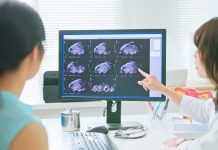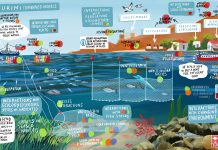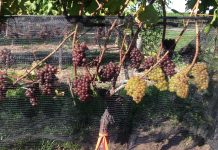Open Access Government produces compelling and informative news, publications, eBooks, and academic research articles for the public and private sector looking at health, diseases & conditions, workplace, research & innovation, digital transformation, government policy, environment, agriculture, energy, transport and more.
Home 2025
Archives
Food environment dynamics research
Dr. Terrence Thomas and Murat Cankurt, Ph.D. at North Carolina A&T State University provide guidance on the fundamentals of food environment dynamics research.
Cadmium (Cd) toxicity and its remediation through plant growth promoting bacteria
This review explores how Cadmium (Cd), a toxic heavy metal that continues to pollute our environment, impacts plants and humans, and examines how plant growth-promoting bacteria (PGPB) can be used for eco-friendly remediation through multi-omics approaches.
Elimination of cervical cancer: Implementation in action
Professor Karen Canfell and Paul Grogan from the Cancer Elimination Collaboration at the Sydney School of Public Health discuss the WHO strategic plan for elimination of cervical cancer and how a combination of prevention, screening, and treatment can effectively achieve this goal.
Gut microbiome and aging – Unlocking new frontiers in healthy longevity
As the population ages, research into preserving healthy longevity is gaining pace. Christian Brechot highlights the role of the gut microbiome – a complex community of microorganisms within us – in influencing health as we age.
Making Europe the epicenter of global scientific talent
Cecilia Van Cauwenberghe explores investment in scientific minds, aiming to build Europe’s future by reflecting on Commissioner Zaharieva’s vision for research and innovation that seeks to establish Europe as the epicenter of global scientific talent.
Driving innovation in lunar water purification technology
Learn about how the UK Space Agency’s International Bilateral Fund (IBF) supported the UK-Canada Aqualunar Challenge to promote advancements in lunar water purification technology.
How U.S. research and innovation are reshaping the global energy future
Cecilia Van Cauwenberghe discusses how U.S. research and innovation are transforming the global energy landscape, beginning with comments on energy innovation necessity.
Bexyl Project: Beyond Xylella – Europe’s United fight against Xylella fastidiosa, a silent plant...
Across the Mediterranean, olive groves have shaped landscapes, cultures, and economies for centuries. But in the last decade, this heritage has come under threat from a silent plant killer: Xylella fastidiosa.
Positioning spontaneous activity as ‘Adhesive Dots’: Lessons from AI for data integration in neuroscience
In the previous article, I argued that advancing data integration in neuroscience requires incorporating resting-state spontaneous activity into each experiment, framing it as ‘adhesive dots.’ Here, I extend that discussion by drawing strategic lessons from the success of large language models (LLMs) and by concretizing the earlier claims from the perspective of data.
Algae4IBD: A holistic approach to IBD treatment
The Algae4IBD project is exploring the untapped potential of algae and cyanobacteria to manage inflammatory bowel disease (IBD). In this exclusive Q&A, Dr. Dorit Avni, Research Group Leader explains how the team are creating innovative functional foods, aiming to improve quality of life and prolong remission for patients worldwide.
Paternal perinatal mental health: Barriers to help-seeking
Deborah Da Costa, PhD, Associate Professor at the Department of Medicine, McGill University, Scientist at McGill University Health Centre, details the benefits and barriers to paternity leave uptake by fathers following the birth of a child.
Unlocking global climate finance: Governments must champion carbon markets
While governments worldwide are stepping up to support voluntary carbon markets, now is the time to scale climate finance with integrity and impact, Chris Duck from Climate Impact Partners argues.
SURIMI: Pioneering sustainable fisheries management via EU DTO
Patrycja Antosz, the Research Director of the Center for Modeling Social Systems in NORCE Research AS, shares details of the SURIMI project, part of the European Digital Twin of the Ocean (EU DTO) initiative, aiming to enhance sustainable fisheries management.
Forest management in an uncertain future: The role of tree diversity
Prof Dr Andreas Rigling and Dr Valentina Vitali highlight the importance of tree diversity for enhancing forest resilience in an uncertain future.
Soil health: Assessing and monitoring using soil biology
Lynette Abbott from The University of Western Australia, focuses again on soil health, this time by assessing and monitoring using soil biological indicators.
Unlocking private financing for deep energy renovation
Guillaume Lorentz, Head of Bankable Sustainable Solutions at the Sustainable Finance Observatory, explores FiRéno+, a project under the LIFE 2021-2027 programme funded by the EU to unlock private financing for deep energy renovation.
Stimulating women’s entrepreneurship in contexts of oppression
Applying insights from a recent article published in the Academy of Management Perspectives, Dr Jennifer Jennings discusses critical precursors to entrepreneurship for women living under oppressive conditions.
Consultations with professional groups to improve filicide intervention
Professor Emeritus AM Thea Brown highlights the importance of education and resources among agencies to recognise warning signs of potential filicide and calls for better intervention strategies to protect children.
Hormonal contraceptives and cognition – time to refocus on women!
Hormonal contraceptives shape women’s brains in ways we still barely understand, and it’s time to study their effects on the cognitive functions that really matter, not just “male-like” performance, says Belinda Pletzer, Professor of Neuroendocrinology, Centre for Cognitive Neuroscience – Paris Lodron University of Salzburg.
Clones for viticulture in Canada: National clonal selection program
Jim Willwerth from CCOVI at Brock University highlights the importance of clonal propagation in grapevine cultivation, as new vines are grown from cuttings of a ‘mother vine’ to preserve desirable traits. He also advocates for a national clonal selection program to assess new clones for Canada’s cool climate.





















